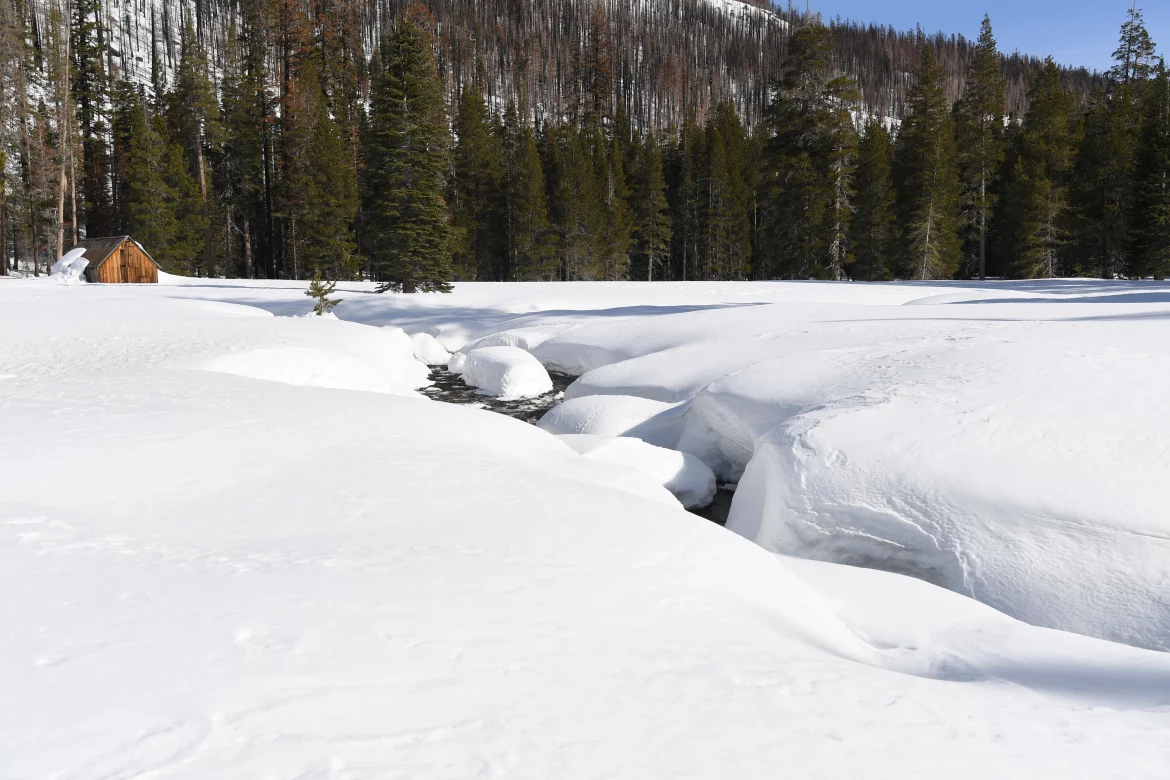Report show that California came up short In the first snow survey of the season – just 25% of the historical average – despite a spate of strong storms that caused flooding and landslides along the coast in late December.
Snow is very important to California’s water supply and it acts as a kind of water savings account by slowly flowing into streams, soils and reservoirs in the drier seasons. The snowpack in the Sierra provides, on average, roughly 30% of California’s water supply, but that could change in the coming decades as snow becomes more scarce.
Officials were reported to have On Tuesday, measured a depth of just 7.5in at a monitoring station in the Sierra Nevada mountain range east of Sacramento, where brown patches of vegetation could be seen poking through the shallow snow. Statewide, the amount is the lowest logged for this time of year in the last decade.
Reports show that this year’s survey stands in sharp contrast to last year’s, when a parade of storms caused by “atmospheric rivers” coincided with cold weather, producing one of the largest snowpacks in history. For 2023’s first survey the banks stood at 55.5in, roughly 177% of average.
Read also:UK govt says Rosebank oil will be sold on international market
Most of California’s precipitation falls between December and March with peak snow amounts accumulated by 1 April, so there’s still time for the state to catch up.
“We often get slow starts to our water year,” said the state climatologist, Michael Anderson, who added that the next measurement, scheduled tentatively for 1 February, will paint a clearer picture of how the year will play out.
Storms are already in the forecast for the coming weeks. But even if this winter grows wetter, it’s also expected to be warmer. That’s not great news for the snowpack, or California’s water managers, who are already navigating more severe swings between wet and dry.
California’s climate is said to have long produced boom-and-bust cycles when it comes to water, but the climate crisis is turning up the heat and increasing volatility.
Policies and infrastructure have struggled to keep up with changes exacerbated by the thirsty state’s overuse. Reservoir levels are now robust, but heavy rains without snow could cause destructive flooding in the short term with less water to go around during the hot, dry months to come.
Story was adapted from the Guardian.
